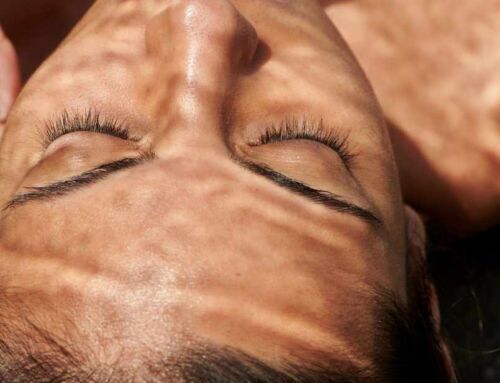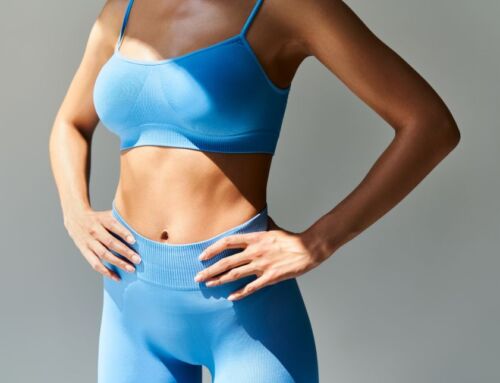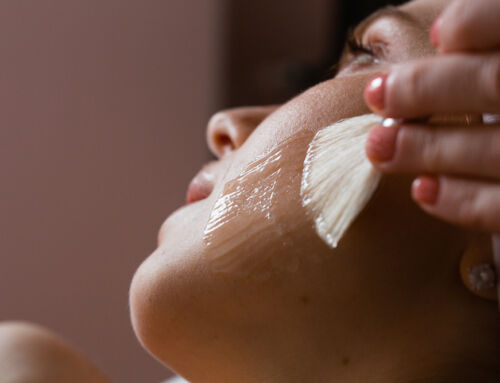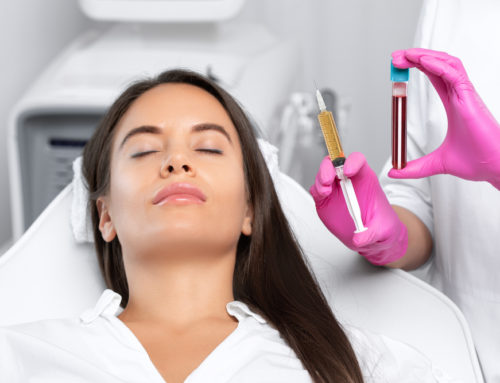
If you still find yourself asking, “what is Botox?” you’re not alone. It’s one of the most popular cosmetic treatments on the market with good reason. The solution is an injectable neurotoxin that is most commonly used to smooth wrinkles. This treatment is approved by the FDA, but doctors have found many other therapeutic uses for Botox. Some have been approved by the FDA, but others have not.
The reason for this is because when a drug is approved by the FDA, doctors can prescribe it for any number of uses. While there are some studies being done to determine if these uses are viable treatments, they are still not approved for several reasons. However, there are 7 popular uses for Botox with proven results, like the ones listed below.
BOTOX FOR MIGRAINES
According to Migraine.com, more than 38 million people in the United States have migraine disease. They also estimate that around at least 4 million people in the U.S. have chronic migraines. When people experience migraines, they typically report a pulsing headache and sensitivity to light and sound.
Migraines can range from mild to crippling in levels of pain. This makes even daily activities difficult. Usually, migraines are treated with medications that include caffeine to help relax the muscle contractions that cause the headache.
However, in some cases, doctors are prescribing Botox as a way to relieve chronic migraines. The reason this works is that the botulinum toxin in Botox inhibits the production of acetylcholine, which is a chemical neurotransmitter.
If you want to receive Botox for chronic migraines, you should always see a trained professional.
EXCESSIVE SWEATING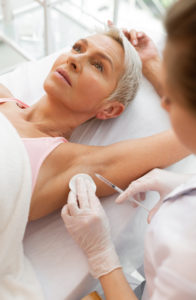
A condition known as primary axillary hyperhidrosis causes excessive underarm sweating. Managing this condition can be annoying and expensive, from replacing clothes with sweat stains to frequently buying deodorant.
In the medical world, this is a rare condition, but other conditions can lead to secondary hyperhidrosis. While we don’t know exactly what causes this condition, it is most likely a genetic condition. Both men and women can be affected by this condition, and they usually notice symptoms around puberty.
In terms of treatment, antiperspirants along with other medications have been used. Additionally, it has been found that the neuro inhibiting properties of Botox can slow down the activity of overactive sweat glands.
BLADDER CONTROL
Generally, there are two types of bladder control problems, which are described as “dry” and “wet” bladder. Dry overactive bladder is when you have sudden and frequent urges to urinate during the day. On the other hand, a wet overactive bladder has the same sudden urge to urinate but includes bladder leakage. In medical terms, this is called urge incontinence.
There are many reasons that lead to an overactive bladder, but chief among them is damage to the nerves that regulate urination. Weakness in the pelvic floor muscles can also lead to overactive bladder problems.
Most of the time, medications are prescribed to relax the bladder. However, these medications can sometimes be ineffective. Medical providers have found that Botox can be used to relax the bladder. Another benefit of Botox treatment is the reduction of urge incontinence.
MUSCLE SPASMS
This use for Botox was approved by the FDA back in the year 2000. Most of the time, it’s used to treat severe neck muscle spasms, but it can also be used to treat other kinds of muscle spasms. For instance, it can be safely used to treat uncontrollable blinking, also known as eyelid spasms or blepharospasms.
People who have stiff or tight muscles have also found relief with Botox injections.
CROSSED EYES
Yet another use for Botox is correcting the conditions such as strabismus, which causes cross-eye and other eye alignment problems. This condition usually affects the muscles that move the eye, so Botox is the perfect option if you aren’t ready for surgery.
DROOLING
As weird as it sounds, there are some conditions that can lead to excessive saliva production. This can also be caused by certain medications. Regardless, Botox is an option to treat excessive saliva production.
REDUCE ACNE
While it has yet to become an approved treatment, there are research studies that have shown positive results for acne reduction. Researchers found that when Botox is injected into active pimples, it slows down the amount of oil the skin produces. With less oil, fewer acne forms, and it gives the skin more time to heal.
While Botox doesn’t necessarily prevent acne, it is possible that it can reduce the overall amount of acne that develops over time.
Additional Experimental Uses
These seven uses of Botox are only a few of its many uses for it. There are several other experimental uses which include treating depression, abnormal heartbeat, and cold hands. These uses are not approved by the FDA, but doctors and medical providers can prescribe them.
You should note that because these treatments are not FDA approved, there are additional risks. As a matter of fact, the company that owns Botox, Allergan, has been sued because of prescriptions for unapproved uses that caused serious side effects.
Ask your doctor if you would benefit from using Botox therapeutically. They will be able to offer recommendations about whether or not it is the right treatment for you.
WHAT IS BOTOX USED FOR?
Botox has been approved for various medical and cosmetic uses, and some of the most surprising ones include:
- Hyperhidrosis (Excessive Sweating): Botox injections can help control excessive sweating by blocking the release of the chemical responsible for activating sweat glands.
- Chronic Migraine Relief: Botox is FDA-approved for treating chronic migraines in adults. It involves injecting Botox into specific areas of the head and neck to reduce headache frequency.
- Overactive Bladder: Botox injections can help control overactive bladder symptoms by relaxing the bladder muscles and reducing urinary urgency and frequency.
- Strabismus (Crossed Eyes): Botox can be used as an alternative treatment to correct certain eye muscle imbalances that cause crossed eyes or other eye alignment issues.
- Bruxism (Teeth Grinding): Botox injections into the jaw muscles can help reduce teeth grinding and clenching, which can alleviate associated jaw pain and headaches.
- Vocal Cord Disorders: Botox can be used to treat spasmodic dysphonia and other vocal cord disorders by relaxing the muscles responsible for vocal cord spasms.
- Depression: Some studies have suggested that Botox injections in the forehead may have mood-lifting effects, potentially helping with symptoms of depression.
It’s important to note that while these uses have shown promise, Botox treatment should always be administered by a qualified medical professional. New uses and research may have emerged beyond my last update, so it’s best to consult with a healthcare provider for the latest information on Botox applications.
What’s Botox Microdosing?
“Botox microdosing” refers to a trend in cosmetic treatments where smaller quantities of Botox are used to achieve more subtle and natural-looking results. In traditional Botox treatments, higher doses are often used to temporarily paralyze specific muscles to reduce the appearance of wrinkles and lines. However, some people prefer a more conservative approach, using lower doses of Botox to achieve a more subtle effect while still preserving some facial movement and expression.
Microdosing Botox is typically used in areas where fine lines and early signs of aging appear, such as around the eyes (crow’s feet) or the forehead. The idea is to soften wrinkles and prevent them from deepening over time, while maintaining a natural and less “frozen” appearance.
It’s important to note that the effectiveness of Botox microdosing may vary based on individual factors like skin type, muscle strength, and treatment goals. Choosing the right approach should be discussed with a qualified and experienced medical professional to ensure that the treatment aligns with your desired outcome and expectations. Always consult with a licensed healthcare provider before undergoing any cosmetic procedure.
VISIT GARZA PLASTIC SURGERY FOR BOTOX
We are one of the most unique aesthetics centers in Nashville, TN because we have both a double board certified plastic surgeon and an esteemed aesthetic, advanced practice nurse. Dr. Garza offers many types of plastic surgery, while Tracey Robinson can help you get your skin looking better than ever.
Botox is only one of the injectables we offer in our Nashville office. We also offer Kybella® treatments and several products from Juvederm®.
Come visit us any time or give us a call! Don’t let your youthful skin be a thing of the past.


